Nara Travel Guide
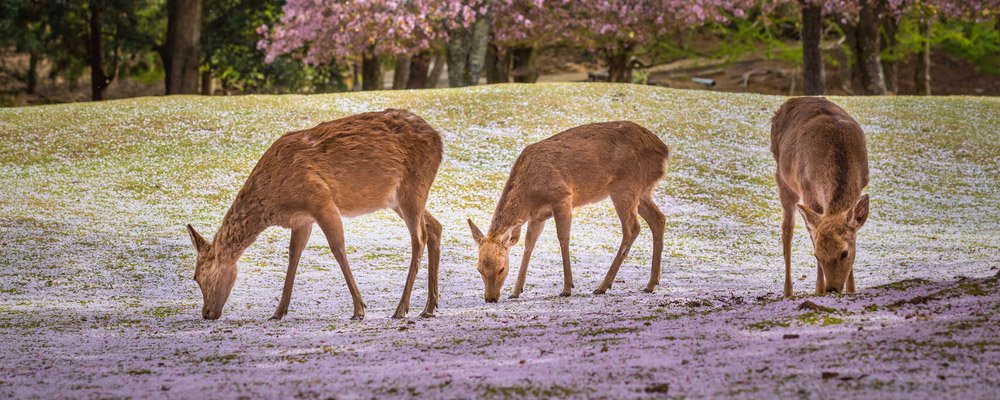
 Overview
Overview
Located in the Kansai region, Nara is a major historical city of Japan. It is home to the UNESCO World Heritage Site known as the “Historic Monuments of Ancient Nara” which includes several temples and landmarks.
 When To Go
When To Go
- In springtime (March – May), Nara welcomes many tourists who want to have the best seats to enjoy the peak of the cherry blossom season.
- During the summer months (June – August), Nara’s temperature and humidity rise, but its many tourist destinations still attract throngs of people.
- In autumn (September – November), Nara also offers a grand opportunity to witness the beauty of the autumn foliage in its many parks and gardens.
- In winter (December – February), the average temperature is around 10 degrees Celsius, and fewer crowds come to the city during this time.
- From 1-14 March, Nara holds a series of events at Todaiji Temple called Omizutori. Omizutori holds many events but the most famous event is otaimatsu where, just after sunset on every night from 1-14 March, giant torches from 6 to 8 metres high are carried up to Nigatsudo’s balcony and held over the crowd. When the crowd is showered with the burning embers from the torches it is thought to grant them with a safe year.
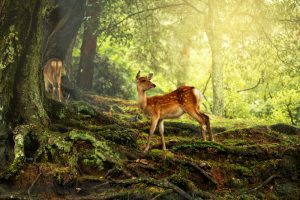
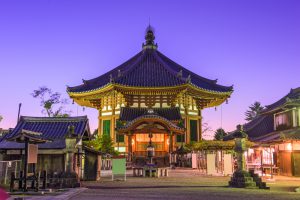
Kofuku-ji Temple
 Things To See
Things To See
Explore the World Heritage sites of Nara
- Todai-ji – A prominent landmark of the city of Nara, Todai-ji is one of Japan’s most important temples. It houses a 15-metre tall bronze Buddha statue.
- Kofuku-ji – Established more than 1,300 years ago, Kofuku-ji is a Buddhist temple that is home to many different National Treasures, including the East Golden Hall, a three-storey pagoda, a five-storey pagoda, and North Octagonal Hall.
- Kasuga Shrine – Nara’s most prominent shrine, Kasuga Taisha served as the Fujiwara clan’s tutelary shrine during the majority of the Nara and Heian Periods. The complex consists of many auxiliary shrines, gardens, and other relics.
- Yakushi-ji – A 7th century temple known for the symmetric design of its complex. It has gone through many fires and been renovated several times through the years.
- Toshodai-ji – Founded in 759 by a Chinese priest named Ganjin, Toshodai-ji is a temple that honours the contributions of its founder to the beginnings of Buddhism in Japan.
- Heijo Palace – When Nara was capital of Japan during the Nara Period in the 8th century, the city was called Heijo-kyo and the palace became its centrepiece.
Meet the deer at Nara Park
Situated in the city centre, Nara Park includes several of Nara’s popular landmarks and attractions, such as the Nara National Museum, Kofuku-ji, Kasuga Shrine, and Todai-ji. It serves as the home of hundreds of deer that wander freely in the area. In Shintoism, deer are believed to be messengers sent by the gods.
People who visit the park may feed the deer but are advised to be careful as some of these animals can be aggressive if hungry.
Visit the city’s gardens
- Isuien Garden – Literally meaning “garden founded on water”, Isuien Garden consists of many ponds, a wide variety of plants and trees in its two main gardens, a nearby museum, and some tea houses. Its front garden was created in the 17th century, while the rear garden was established in 1899.
- Yoshikien Garden – Situated next to the Yoshikigawa River, Yoshikien Garden is open to foreign tourists for free. It boasts of three uniquely designed gardens — tea ceremony garden, moss garden, and pond garden — all of which feature outstanding Japanese gardening styles and techniques.
Observe the Stone Buddha of Ataya
One of the must-see Buddhist attractions if visiting Nara, the Stone Buddha of Ataya is the largest in the world. Also worth seeing is the large bronze Buddha statue housed in Todaiji Temple’s main hall.
Learn at the Nara National Museum
About a 15-minute walk from Nara Station, the Nara National Museum in Nara Park is a century-old art museum that showcases Japanese Buddhist collections such as paintings, Buddhist statues, scrolls and religious items.
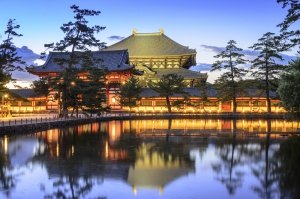
Todaiji Temple
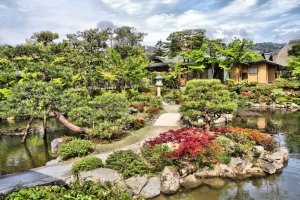
Isuien Garden
 Where To Explore
Where To Explore
- Naramachi – Formerly a merchant district, Naramichi currently features numerous preserved warehouses and buildings that have been transformed into museums, cafes, shops, boutiques and restaurants.
- Mount Wakakusayama – The location of Nara’s popular annual festival known as Wakakusa Yamayaki, Mount Wakakusayama is situated on the east of Nara Park. The grasses at its foot are set ablaze annually on the fourth Saturday of January, at night, followed by a fireworks display.
 Getting Around
Getting Around
From the JR Nara station, many of the city’s attractions, particularly the ones in Nara Park, are only a 20-minute walk away. Alternatively, you may take Nara’s subway (operated by Kintetsu railways) or ride the buses (run by Nara Kotsu).












